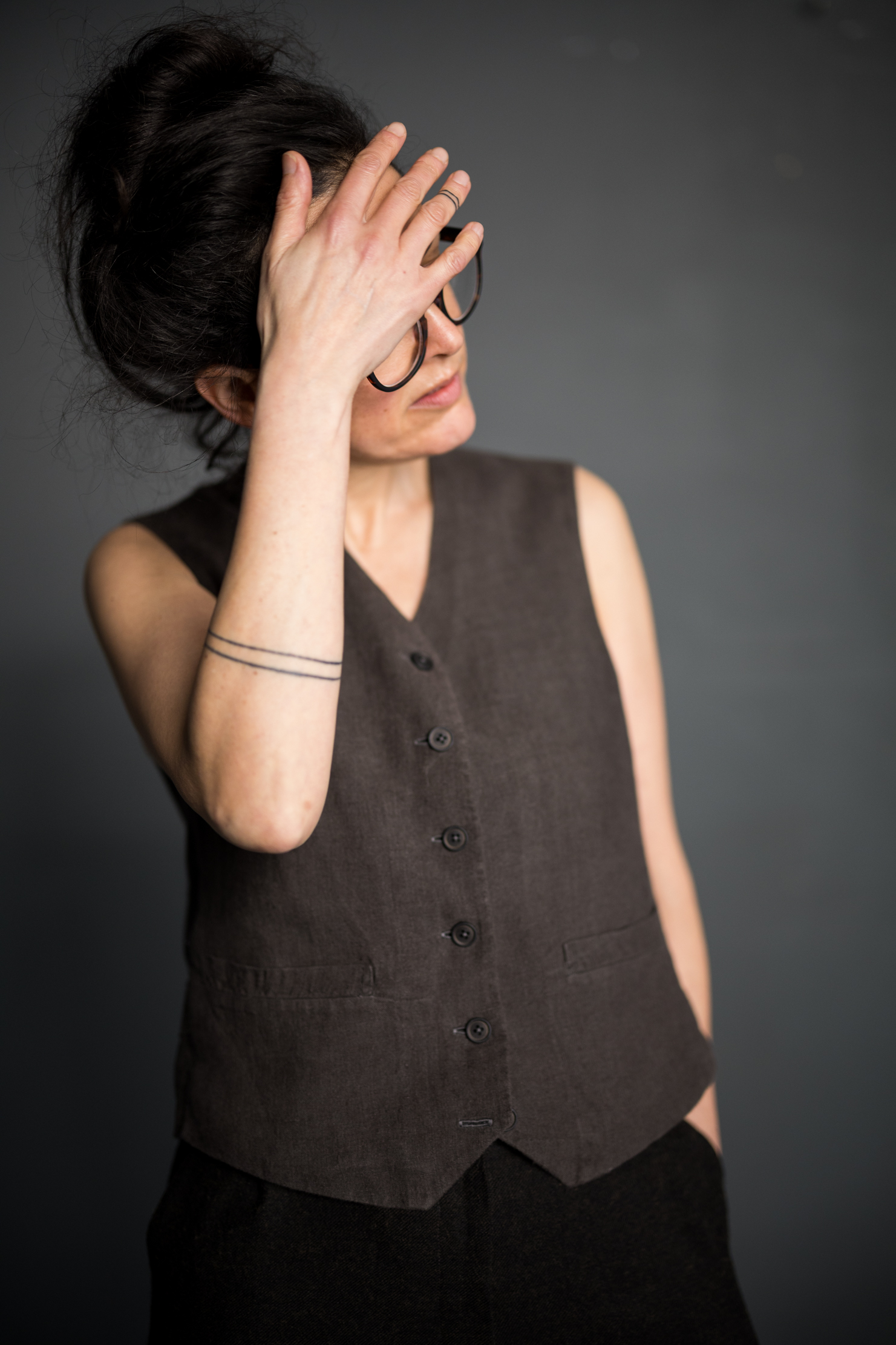
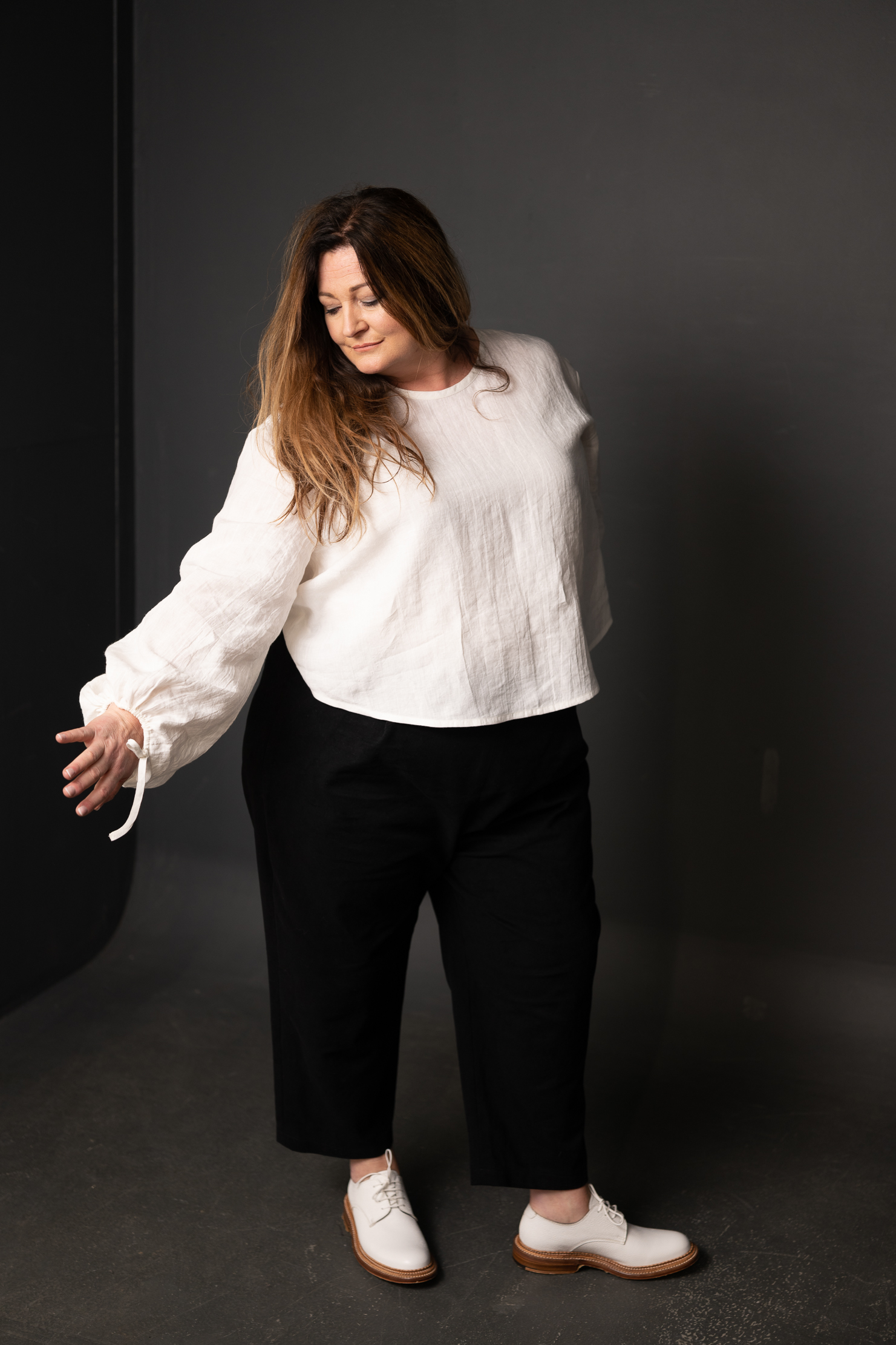
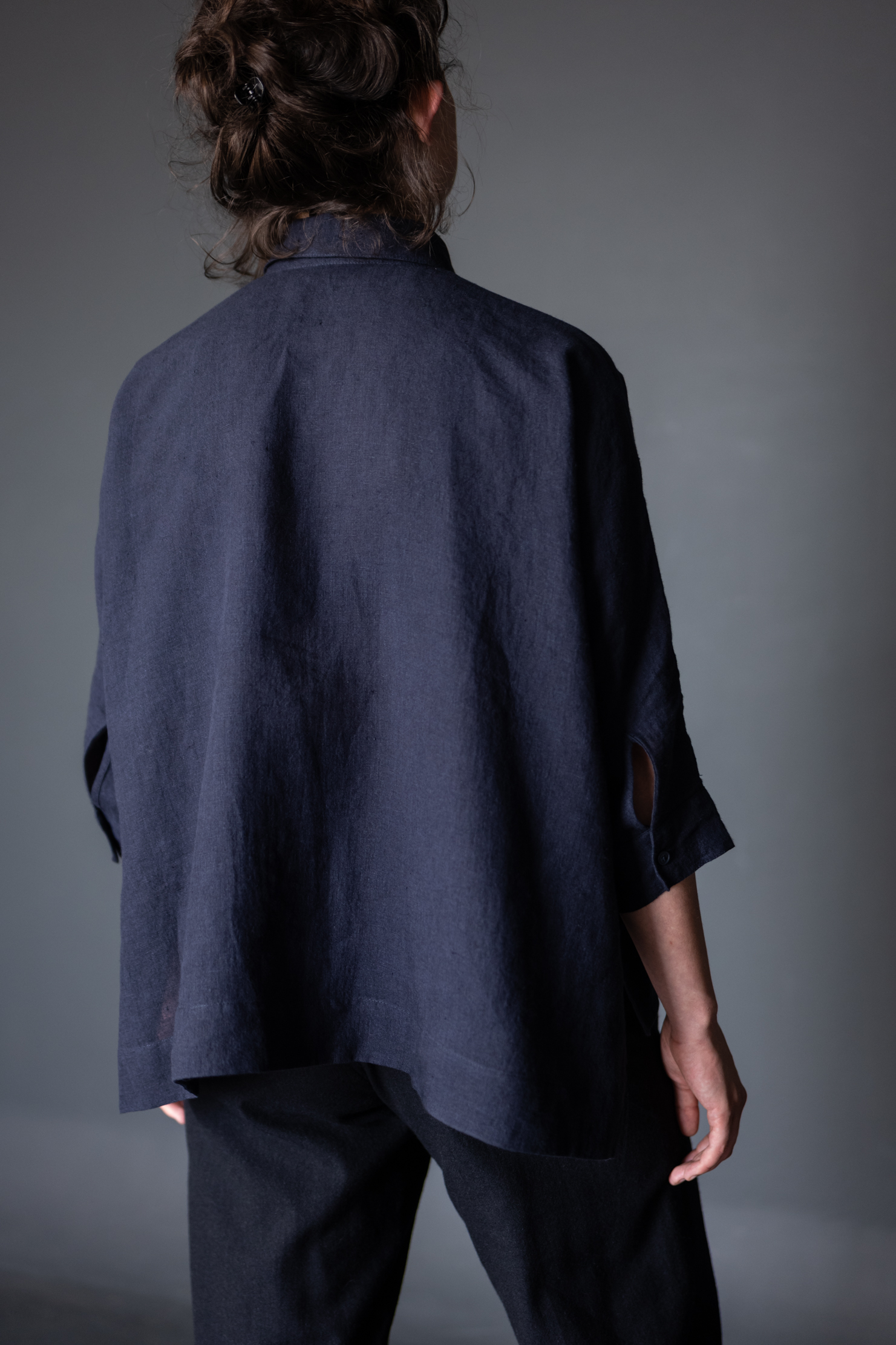
The Cloth
At 4.7oz/160gsm, our Tumbled 160 range is our lightest weight linen. With a tight weave, the cloth is most similar to a handkerchief linen and has a soft slubby texture to it. The cloth is yarn dyed, which gives the fabric a real richness to the colours in this range.
Our 160 linen is perfect for tops, dresses, pyjamas and breezy curtains. As the cloth is slightly sheer, we’d recommend lining dresses, or sticking to patterns that have a slightly fuller and more gathered skirt.
Production & Certification
Linen is made with flax, a plant native to northern Europe. There, farming flax still respects the land and surrounding wildlife; protecting soil and water resources as the crop needs no extra water (rain water alone is enough to grow it) and uses very little fertiliser or pesticides.
The hardy plant can grow in poor soil conditions and is an excellent “break crop”, improving the quality of the soil as it grows. The crop also serves as a carbon sink – a single hectare of flax can remove 3.7 tonnes of CO2 from the atmosphere. In flax production, nothing is wasted. Every part of the plant is used to create linseed oil, paper, cattle feed or soap.
The 160 range is a European laundered linen which is woven from a high quality Italian yarn. It is dyed, spun, and woven in small batches in Europe, before being tumbled at the mill for extra softness. This linen range is Oeko-Tex certified.
Suitable Patterns
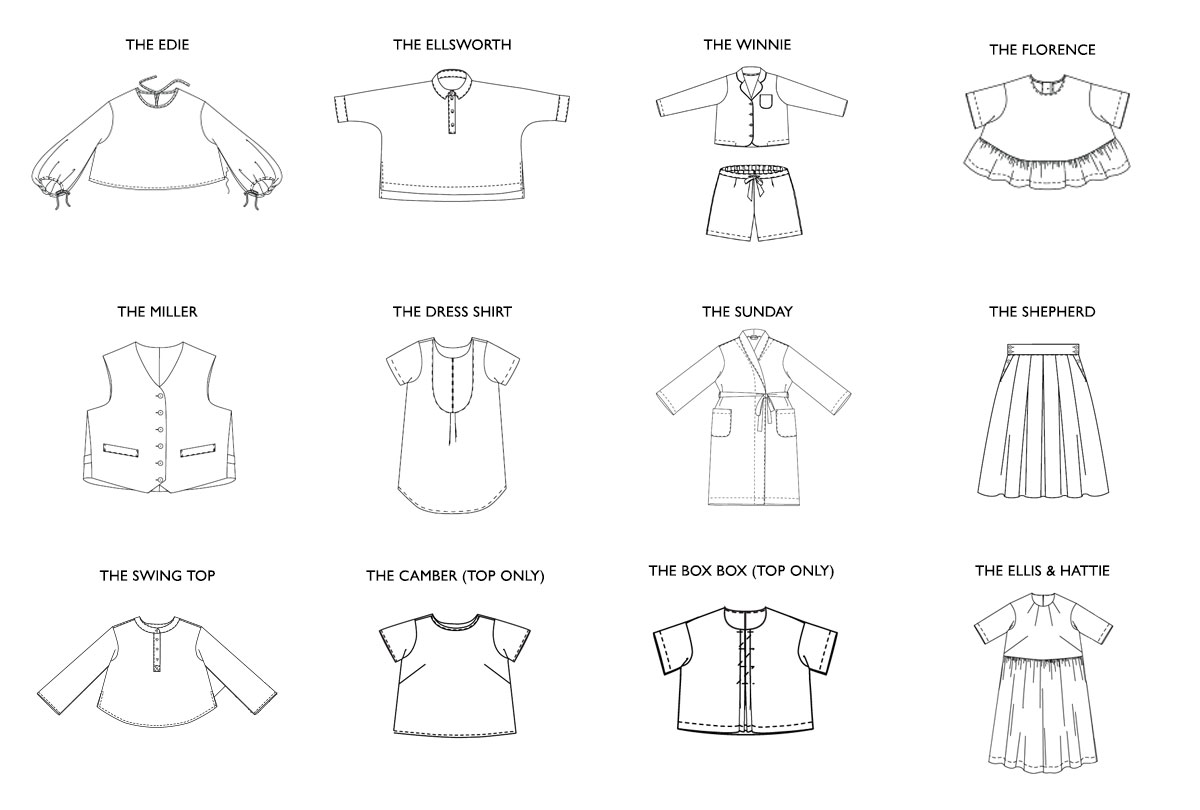
How to sew 160 tumbled linen
- While the needle size for your project will entirely depend on the pattern you’ve chosen, our general rule of thumb: we recommend using a size 10 needle for a pattern with relatively little bulk (like The Trapeze), whereas you may use a size 12 on The Miller as you need to work through multiple layers of linen.
- The key to a successful linen handmade garment starts with careful and considered preparation. Before you cut your pattern out, be sure to iron the cloth as linen wrinkles easily.
- We recommend pulling a thread to enable you to set up the cloth we’ve put together a helpful video tutorial here.
- Be warned, linen is susceptible to drawing out when cut on the bias. For some projects it may be helpful to staystitch areas such as necklines and armholes.
- As linen tends to shift around, sewing around curves can be tricky. We often mark our seam allowance on curved pattern pieces to help honour the seam allowance accurately.
- Linen may fray as it's being handled; we like to mark the notches with chalk as well as snipping into the cloth by 5mm.
- Linen will wiggle about when pressing up a hem so to sew a neat hem, we recommend that you first run a line of machine stitching along your garment at the ‘finished hem’ line. This will help you press up the allowance neatly, as the fabric will naturally want to fold along the stitched line. We’ve put together a video tutorial with this helpful trick that you can watch here.
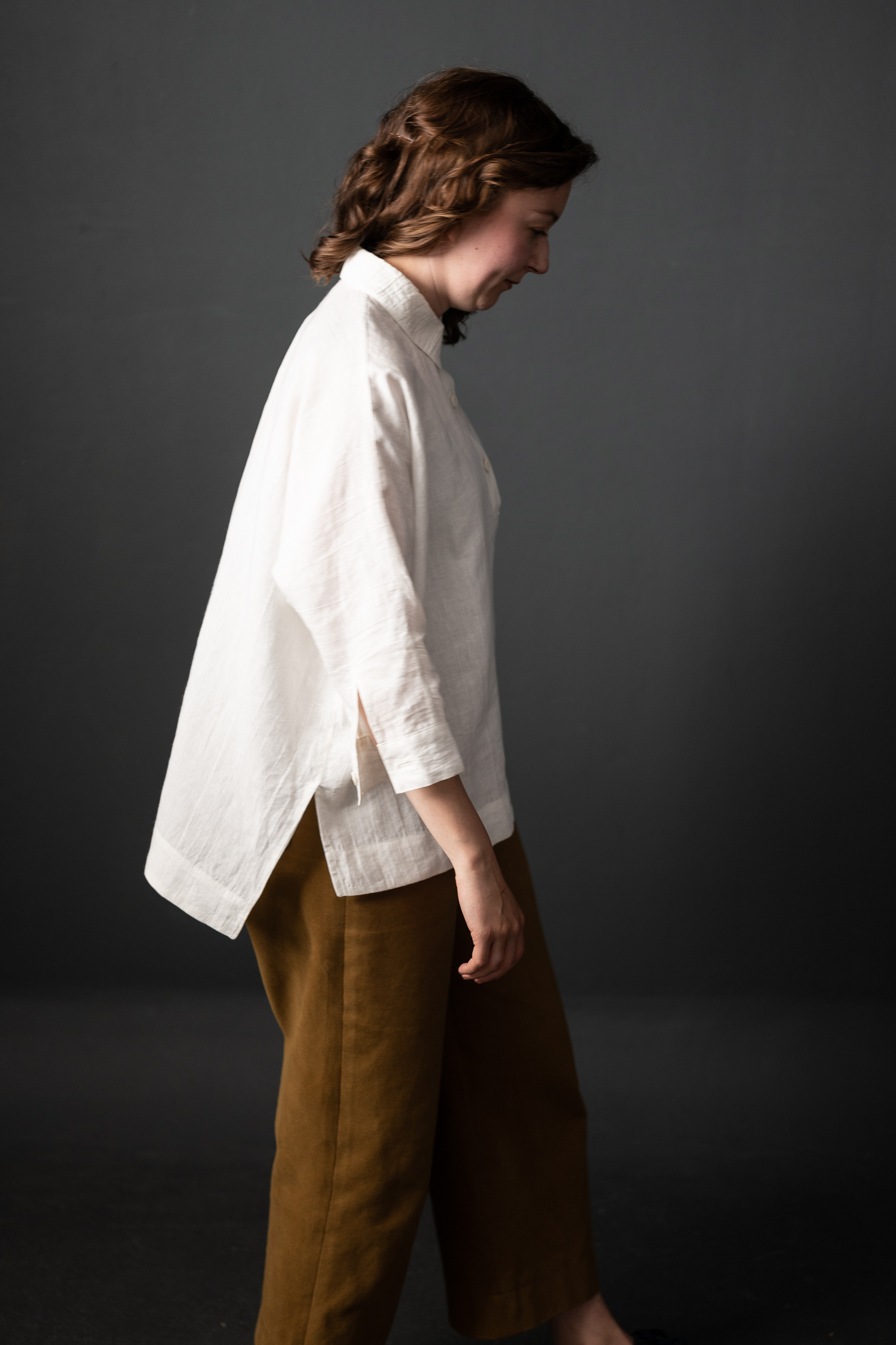
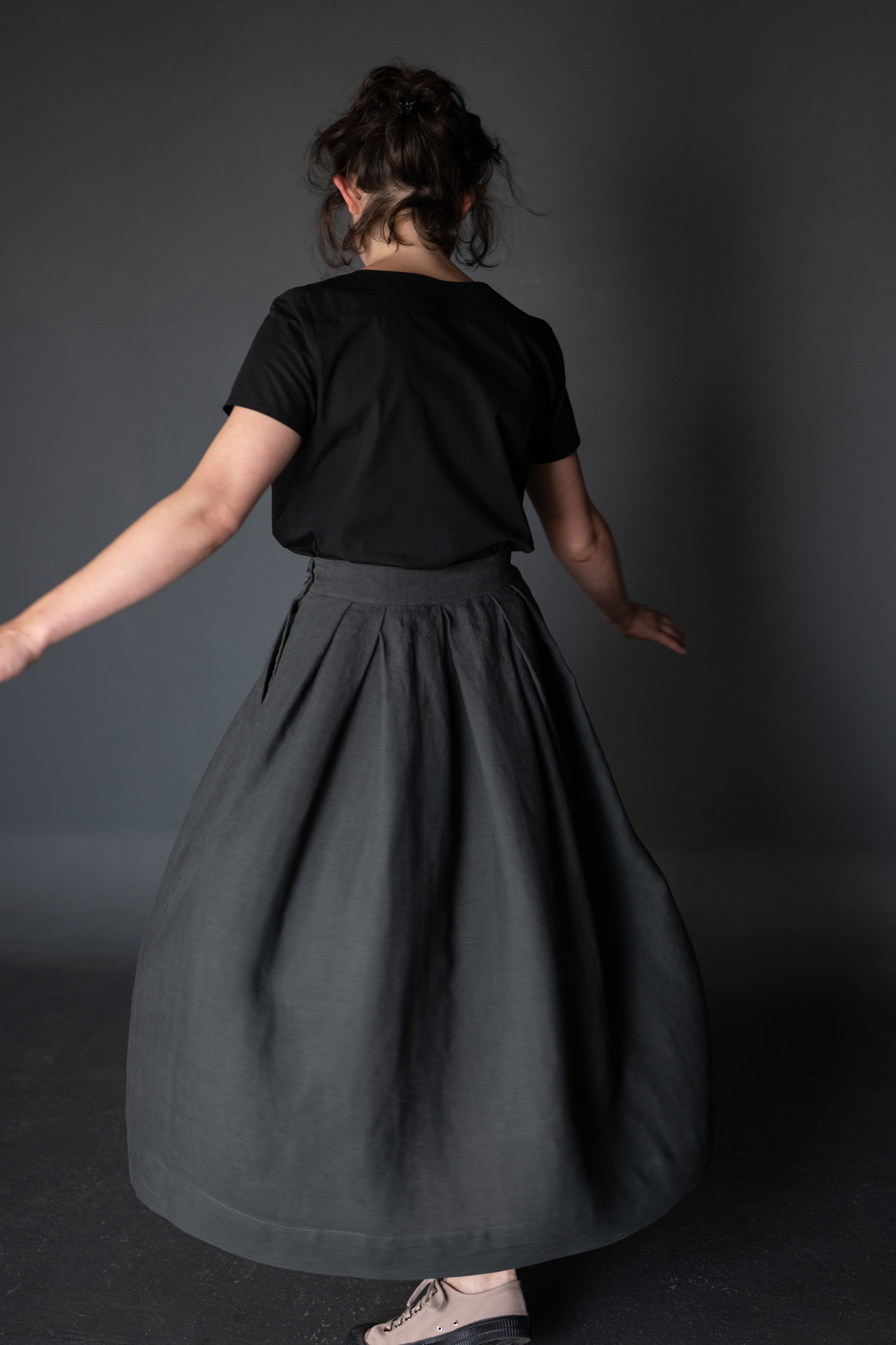
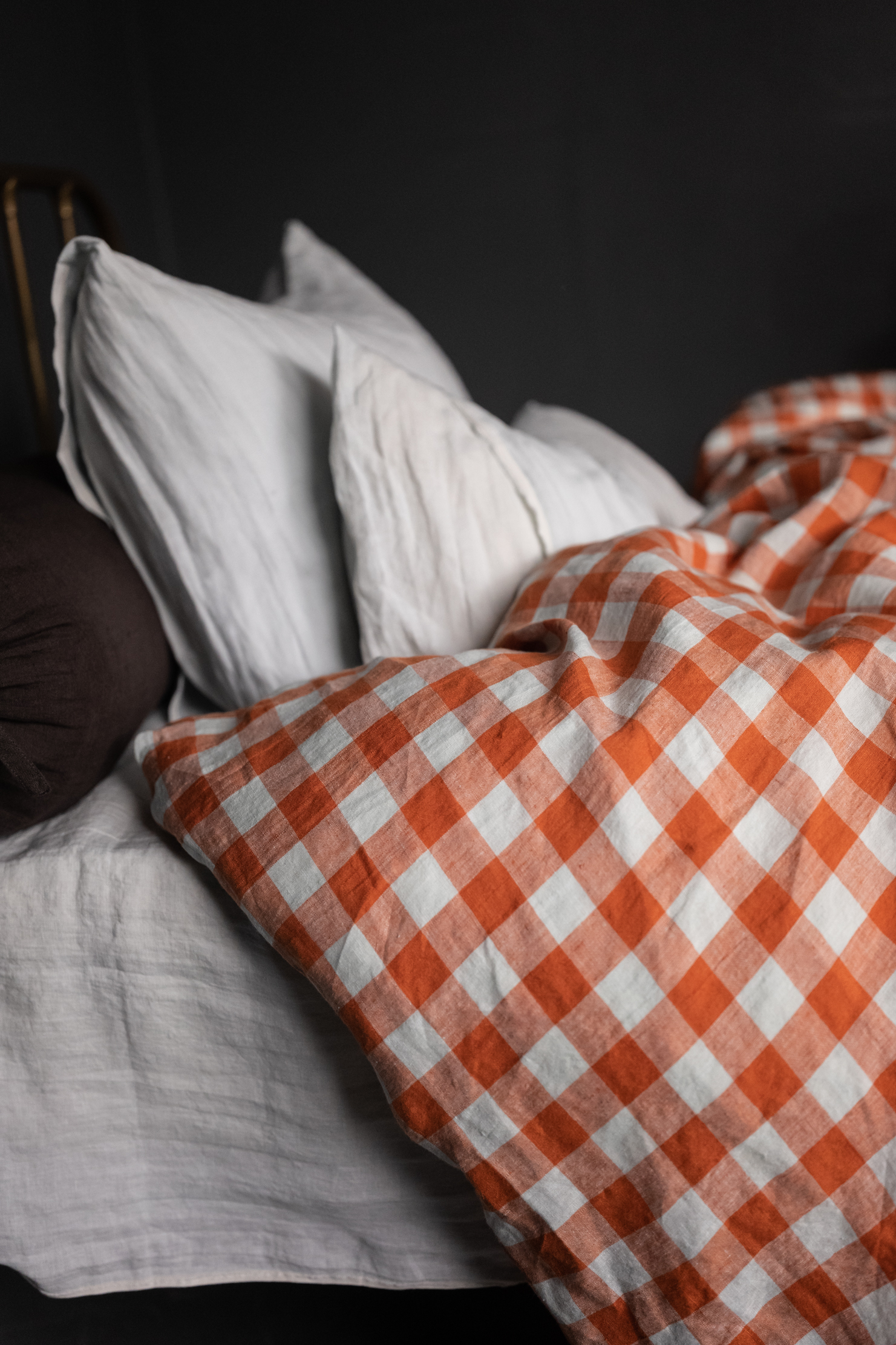
Fabric Care
How to pre-wash 160 tumbled linen
While the 160 linen range has been tumbled at the mill and technically does not need to be pre-washed, we are in-favour of pre-washing your fabric how you intend to wash your finished garment.
How to wash 160 tumbled linen
We recommend washing at 30 degrees with non-bio detergent.
How to dry 160 tumbled linen
Once washed, shake the cloth out and dry flat. Remember that linen will always seize up after washing, but as soon as you wear it the fibres will start to relax.
